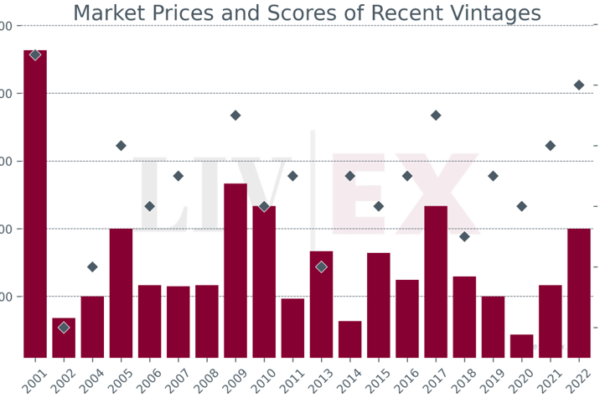Profile
Owner: The Cazes Family
Classification: Fifth Growth
Vineyard area: 90 hectares
Average annual production: 30,000 cases p/a
2011 blend: Cabernet Sauvignon (72%), Merlot (23%), Cabernet Franc (3%), Petit Verdot (2%)
History
At the close of the seventeenth century, John Lynch of Galway fled the political and religious turmoil of Ireland and settled in the port city of Bordeaux. There he married a local woman named Guillemette Constant and quickly established himself as a successful merchant. The couple’s son, Thomas Lynch, appears to have developed a keen interest in the region’s viticultural potential, having acquired two wine estates in Pauillac and one in Margaux. Through his marriage to Elizabeth Drouillard, Thomas then inherited an estate in the village of Bages, which he subsequently renamed “Cru de Lynch” – later altered to Lynch Bages.
Though the family did much to advance the estate’s reputation, their 70-year tenure was somewhat tumultuous, with both Jean-Baptise Lynch and Chevalier Michel Lynch imprisoned for a time during the French Revolution. And when the brothers died without leaving an heir, the estate was sold to a Genevan wine merchant named Sebastian Jurine, signalling the end of the Lynch family’s reign.
In 1855 the chateau was classified as a Fifth Growth, after which it passed through the hands of the Cayrou brothers before being sold to Jean-Charles Cazes in the 1930s. This was a turning point for the estate. Jean-Charles was an innovative winemaker who became involved in the wine business through clients he met as an insurance salesman. After acquiring Les Ormes de Pez, Cazes began living and working at Lynch Bages, which was, at that stage, neglected and in need of attention. After several years, Cazes bought the estate from his landlord, marking the start of an era of rapid viticultural improvement.
Today, Lynch Bages is still managed by the well-respected Cazes family and has transformed into a global brand with a strong following in Asia, Europe and the United States. As Liv-ex’s recent blog determined, after the Bordeaux First Growths, Lynch Bages is the most viewed wine on Liv-ex. And according to last year’s Liv-ex classification, which attempted to mimic the Bordeaux 1855 classification by ranking chateaux based purely on price, the modern-day Lynch Bages sits comfortably among the Second Growths – a telling reflection of the extent to which the brand has developed in recent years.
Market trends
The 2009 and 2010 were of a level of quality not seen in Lynch Bages since the 2000. They received overwhelmingly positive reviews from the major critics, with James Suckling judging the former 97 out of 100 – “One of the top buys of the vintage. Best since 1989” – and the latter even better, “the best Lynch in a long, long time”, with 98. Parker was equally as effusive, although preferred the 2009, to which he awarded 98. He likened the 2010 (RP 96) to the “profound 1989”.
The 2009 and 2010 were released at €72 p/b ex-negociant and €100 p/b ex-negociant respectively, up 125% and 213% on 2008 (€32 p/b) and 46% and 102% on 2005 (€49.5 p/b). The 2009 has enjoyed extremely high demand on the exchange. At the peak of the market the wine was trading for as much as £1,338 per 12×75, but has since come down to around £890 per case.
Like many Bordeaux, the 2010 release was a record high for the chateau and prices have come down significantly since. Having traded at £1,250 when first released, the wine struggled to retain its price and in the last year has not traded above £1,000. Earlier this month it was trading for under £800 per case but in the last week there has been a flurry of trades at £860. The 2010 has accounted for over a third of Lynch Bages’ trade by value in July.
The table below shows the current market prices and Parker scores of recent physical Lynch Bages vintages, with the addition of 1982, 1989, 1990 and 2000. We have also calculated the POP score – Liv-ex’s loose measure of value – for each wine. In theory, the lower the POP the better value.
Looking down the table, Lynch Bages 2008 (RP 93) seems good value at £700 and has also held relatively steady during the market’s downturn. In terms of POP score, it is second only to the 2010, which looks particularly strong when compared with the legendary 1989 and 1990 at more than double the price, and the 2000, which is £629 more.
All prices are in GBP and are for 12x75cl cases. Scores are from www.erobertparker.com
*POP
A wine’s POP score is its price-over-points ratio, our loose measure of value. It is calculated by dividing the price of a nine-litre case of wine by a shortened 20-point score. We have calculated this 20-point score by simply subtracting 80 from the official rating from Robert Parker (for barrel-score spreads we use the mid-point of the score), on the basis that any wine under 80 points is unlikely to attract a secondary market. In theory, the lower the POP score the better value a wine is.






